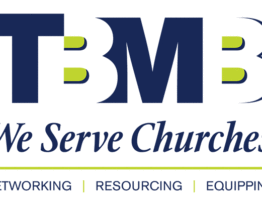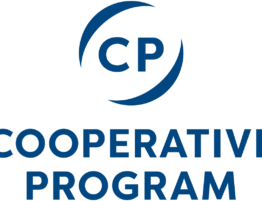 How to Measure an Evangelistic Disciple-Making Program/Process
How to Measure an Evangelistic Disciple-Making Program/Process
When considering an evangelism method, a measuring tool will add objectivity. Whether you are considering a new or repeated method, a measuring tool is necessary. The Evangelistic Metric and Measurement Assessment Scale (EMMA) Scale is a value rubric for prediscipleship programs. The rubric measures the value of considered evangelistic programs and processes. The purpose of the measuring value is to assess if the necessary evangelistic elements are present in the program. The rubric consists of two processes: (1) a pre-program measurement, (2) and a post-program measurement.
The pre-program measurement assesses if the program/process identifies people groups, evangelistically equips the saints, or engages a people group with the Gospel. If the program identifies people groups in your area, then it receives a score of “1”. If the program equips the saints to share the Gospel with the community, then it receives a score of “1”. If the program engages a person or a people group with the Gospel, then it receives a score of “2”. A total of “4” points are available to assess the program/process before it launches.
The pre-program measurement occurs before the program/process has occurred and in most cases can occur before anyone else knows that it is being considered. For example, a church that is considering another year of Vacation Bible School (VBS) can use the EMMA Scale to evaluate the performance of the program as not to leave out any necessary evangelistic elements for a healthy discipleship process. Through the years of operation, your church’s use of a VBS program may have overlooked certain principles that made VBS an effective evangelism strategy. The VBS program should not necessarily be sacrificed because of the lack of element. If the church includes the one element, then VBS may regain the evangelistic/disciple making vigor that it once had. Why is that a win? For most churches, VBS is an annual ministry with a dedicated core of volunteers. VBS has been a natural fit for so many churches that it is an easy sell. In fact, many churches use VBS as a selling point to start Backyard Kids Clubs, which are more evangelistic.
The post-program measurement is a survey that assesses if the program/process has the desired outcome. The survey assesses Gospel conversations, reproducibility and evangelisitic prayer. The survey is to be administered after the program/process. Each participant will be surveyed to measure if principles taught affected lostness. The survey distributed within 1-6 months of program/process (TABLE 1). The survey will score on percentages based on the success of each question. The participant will need to choose one of the four multiple-choice options. Each answer is worth a particular value. The values are: “1” = 0; “2” = 0.25; “3” = 0.50; “4” = 1. If a participant answers “4” for each question then the participant will receive an overall score/value of “3”, as each “4” is valued 1. You will then add the overall score/value of the survey (in this case it is “3”) with the overall score given during the Pre-Program/Process Evaluation and that will be your total score of evangelistic effectiveness for that program/process for that individual. To measure the overall evangelistic effectiveness for an entire group add up all of the overall/score values from all the collected surveys and divide the overall/score value by the number of participants. Division will give you the average score of the survey and allow you to add it to the overall/score from the Pre-Program/Process Evaluation.
“Total Score” will objectively describe evangelistic disciple making value of the program/process. The score will do one of two things: (1) affirm that the program/process is effective in evangelism and discipleship; (2) or identify general areas of need when considering an evangelistic program that effectively makes disciples.
The Evangelistic Metric and Measurement Assessment (EMMA) Scale
Pre-Program/Process Evaluation (to consider if program should begin)
Value Category
“1” – Identify – The program/process identifies lost people.
“1” – Equip – The program/process equips the church to reach lost people.
“2” – Engage – The program/process engages lost people.
If a program “identifies” and “equips” then its value is “2,” if a program only “identifies” then it is given the value of “1.”
Post-Program/Process Evaluation (to consider if program should continue)
Value Category
“3” – Survey – A measurement for those that participated in the program/process. The measurement assists the church leadership when determining if the outcome of the program/process rises to the level of evangelistic disciple making process necessary for being a church. Each answer is worth a particular value. The values are: “1” = 0; “2” = 0.25; “3” = 0.50; “4” = 1. If a participant answers each question by circling the number “4” then the participant will receive an overall score/value of “3”.
A SAMPLE Quantitative Research Survey
- How many times have you shared the Gospel or had a Gospel conversation with someone since the conference/event/training?
1) 0 2) 1-4 3) 5-10 4) 11 or more - How many hours have you spent teaching someone else the principles that you learned from the conference/event/training?
1) 0 2) 1-4 3) 5-10 4) 11 or more - How many times have you prayed for lost people around you since the conference/event/training?
1) 0 2) 1-4 3) 5-10 4) 11 or more
Total Score
________ (Pre-Program Score)
+ ________ (Post-Program Score)
= ________ (Total Score)
- “0-7” total value of a program.
How to Measure an Evangelistic Disciple-Making Program/Process
When considering an evangelism method, a measuring tool will add objectivity. Whether you are considering a new or repeated method, a measuring tool is necessary. The Evangelistic Metric and Measurement Assessment Scale (EMMA) Scale is a value rubric for prediscipleship programs. The rubric measures the value of considered evangelistic programs and processes. The purpose of the measuring value is to assess if the necessary evangelistic elements are present in the program. The rubric consists of two processes: (1) a pre-program measurement, (2) and a post-program measurement.
The pre-program measurement assesses if the program/process identifies people groups, evangelistically equips the saints, or engages a people group with the Gospel. If the program identifies people groups in your area, then it receives a score of “1”. If the program equips the saints to share the Gospel with the community, then it receives a score of “1”. If the program engages a person or a people group with the Gospel, then it receives a score of “2”. A total of “4” points are available to assess the program/process before it launches.
The pre-program measurement occurs before the program/process has occurred and in most cases can occur before anyone else knows that it is being considered. For example, a church that is considering another year of Vacation Bible School (VBS) can use the EMMA Scale to evaluate the performance of the program as not to leave out any necessary evangelistic elements for a healthy discipleship process. Through the years of operation, your church’s use of a VBS program may have overlooked certain principles that made VBS an effective evangelism strategy. The VBS program should not necessarily be sacrificed because of the lack of element. If the church includes the one element, then VBS may regain the evangelistic/disciple making vigor that it once had. Why is that a win? For most churches, VBS is an annual ministry with a dedicated core of volunteers. VBS has been a natural fit for so many churches that it is an easy sell. In fact, many churches use VBS as a selling point to start Backyard Kids Clubs, which are more evangelistic.
The post-program measurement is a survey that assesses if the program/process has the desired outcome. The survey assesses Gospel conversations, reproducibility and evangelisitic prayer. The survey is to be administered after the program/process. Each participant will be surveyed to measure if principles taught affected lostness. The survey distributed within 1-6 months of program/process (TABLE 1). The survey will score on percentages based on the success of each question. The participant will need to choose one of the four multiple-choice options. Each answer is worth a particular value. The values are: “1” = 0; “2” = 0.25; “3” = 0.50; “4” = 1. If a participant answers “4” for each question then the participant will receive an overall score/value of “3”, as each “4” is valued 1. You will then add the overall score/value of the survey (in this case it is “3”) with the overall score given during the Pre-Program/Process Evaluation and that will be your total score of evangelistic effectiveness for that program/process for that individual. To measure the overall evangelistic effectiveness for an entire group add up all of the overall/score values from all the collected surveys and divide the overall/score value by the number of participants. Division will give you the average score of the survey and allow you to add it to the overall/score from the Pre-Program/Process Evaluation.
“Total Score” will objectively describe evangelistic disciple making value of the program/process. The score will do one of two things: (1) affirm that the program/process is effective in evangelism and discipleship; (2) or identify general areas of need when considering an evangelistic program that effectively makes disciples.








